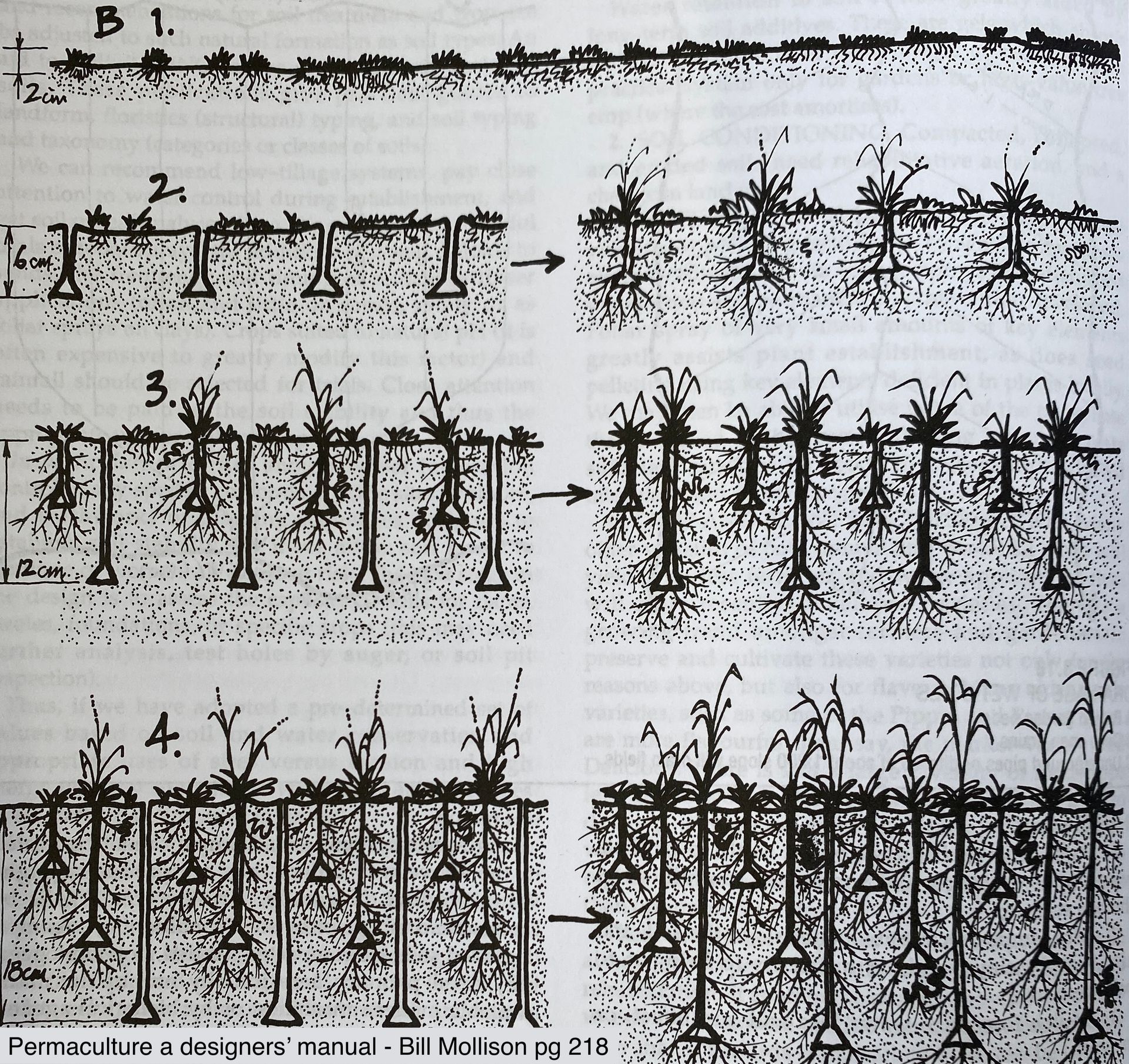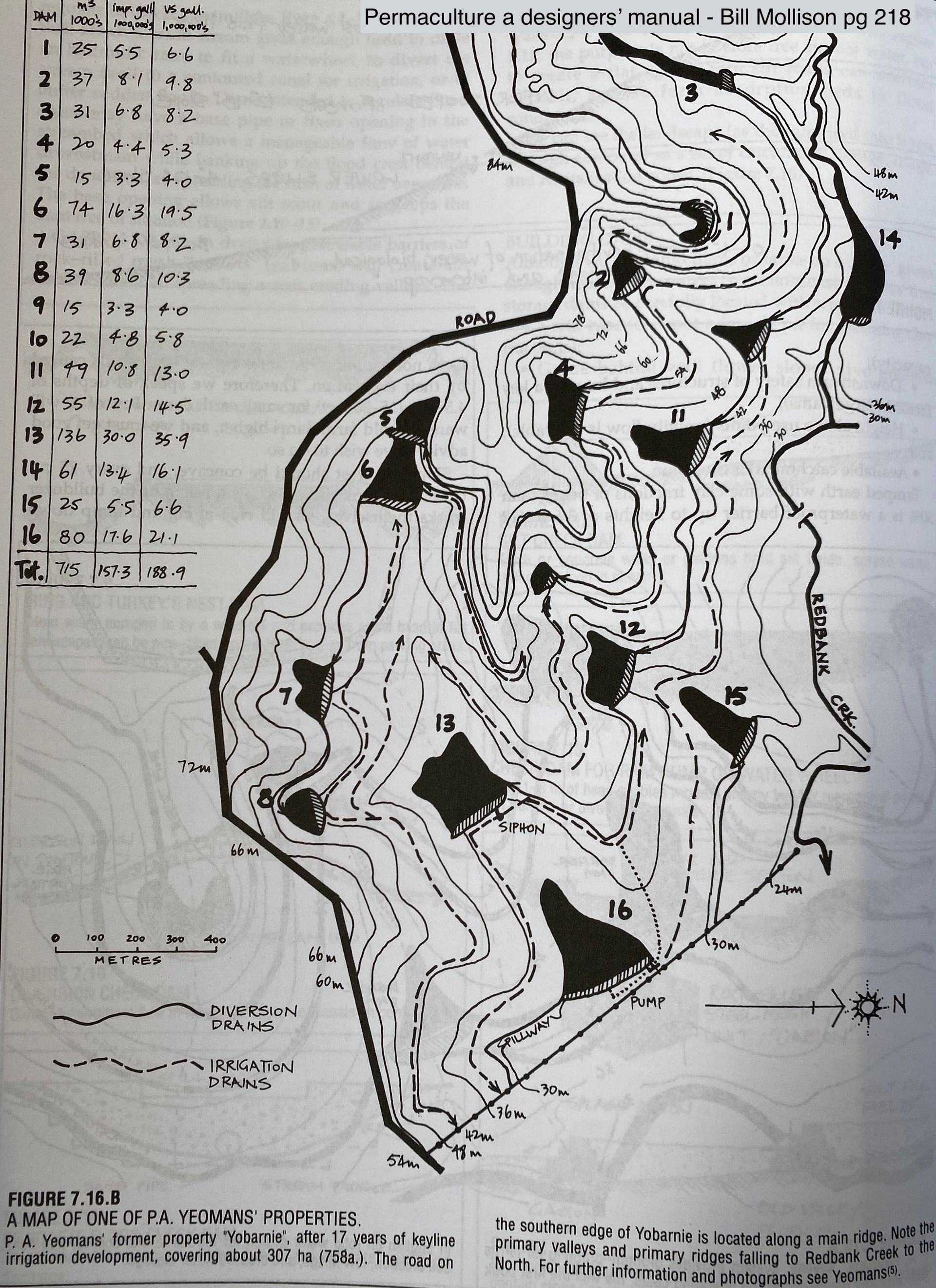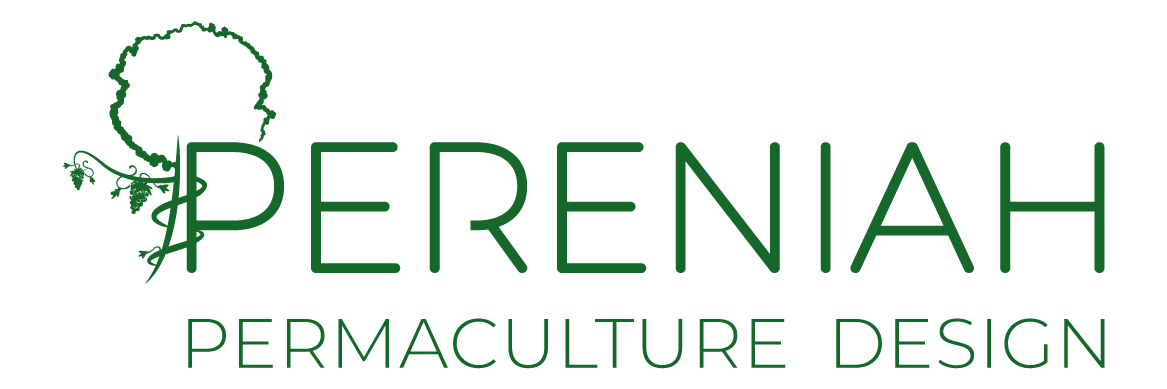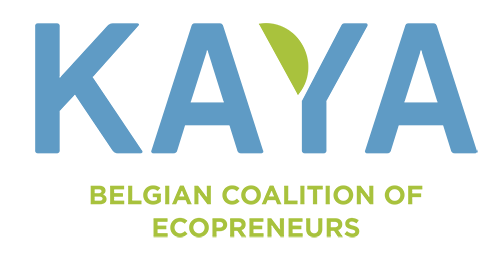Pro's and government
When is permaculture design right for you?
Permaculture design was originally developed for the sustainable management and restoration of large landscapes. It quickly became popular with individuals who could also apply the practical approach themselves.
Today, Permacuture's design methodology is still used to restore landscapes worldwide, make agricultural activities more sustainable, and combine the two.
The key to permaculture design is observing how nature works and thinking like her: in (eco)systems. It also allows for planning for the future. The permaculture designer utilizes existing techniques and applies them only when appropriate for the context.
Different techniques we can use:
- Keyline design
- No-till techniques
- Argoforestry
- Aquaculture
- Rotational grazing
- Polyculture, including food forests
- Intensive vegetable cultivation
- ...
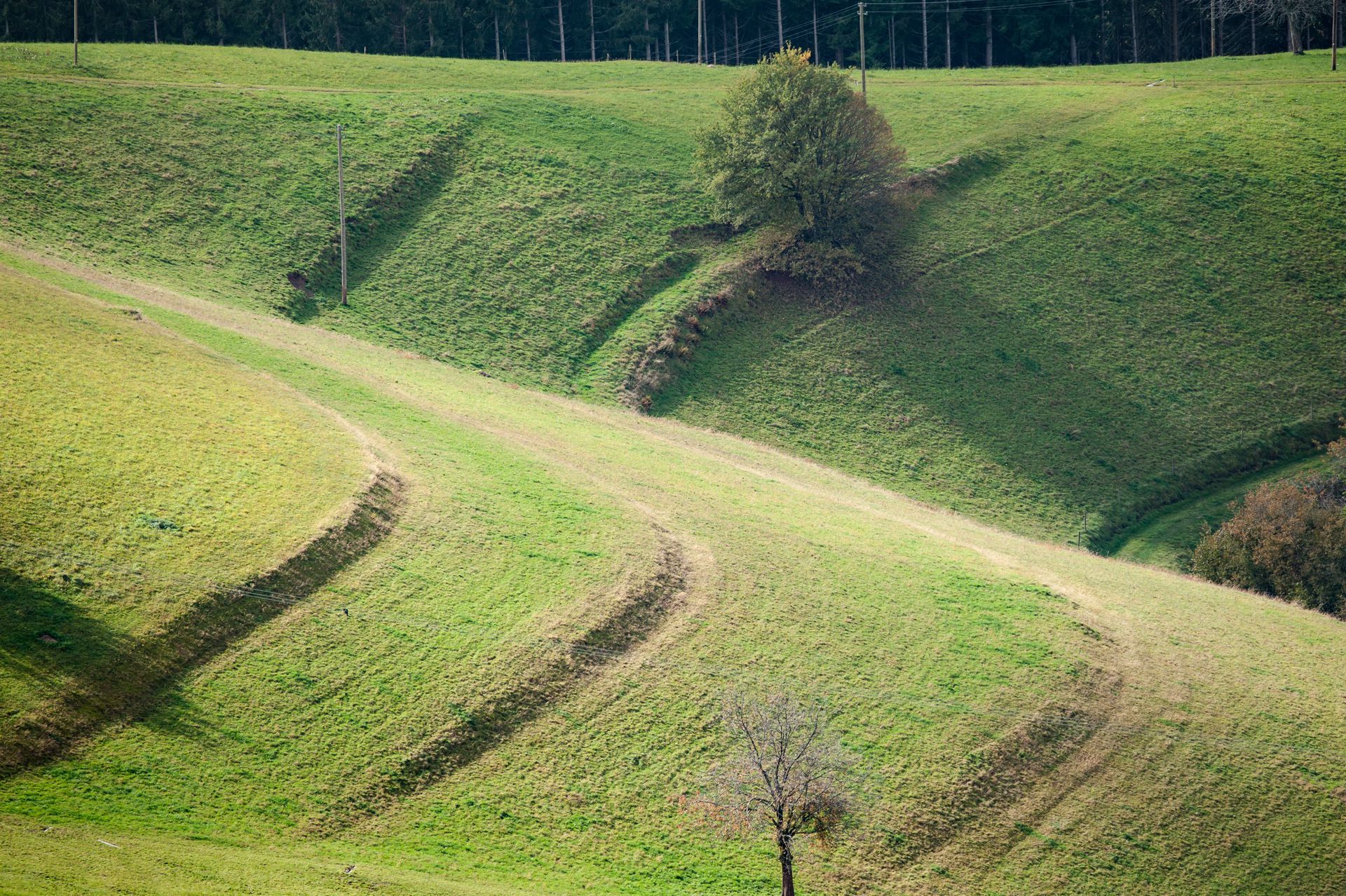
A permaculture designer must think pragmatically: How can the activity be profitable today and continue tomorrow in a changing climate and an unpredictable economy and politics? And also: How do we ensure that the project produces more energy in the long run, than is needed for it's implementation and maintenance? This, within an ethic that strives to support both people and nature.
A permaculture project aims to be sustainable, profitable, and ethical in the long term. At Pereniah, we can advise and design projects for agricultural activities, water management in landscapes, parks, private and public domains, and more. For large projects, we operate throughout Europe.
Services
for farmers, businesses and the government
1. Studies
Extensive site study, based on observation and analysis of the terrain and existing data. Topics covered: region and environmental influences, macro and microclimates, soil and geology, topology, water on and around the site, fauna and flora. Strengths, weaknesses, or signs of degradation are addressed, and improvement opportunities are suggested. Drone maps are also created for designs.
2. Project definition
Together, we'll define the project concretely and develop a long-term vision using our own version of the Holistic Decision-Making Framework: The New Universal Decision-Making Framework. This can be used, among other things, to initiate a market study.
3. Pre-design
A preliminary design is created to lay the foundation for the project, explore various options, and identify any legal, technical, or budgetary obstacles. A keyline design can be used at this stage to efficiently improve the soil.
4. Design
A permaculture design is created with all the necessary details. It's a kind of master plan that may need to be adjusted depending on how the landscape responds to the interventions we make to it.
5. Coordination of the implementation
Step-by-step coordination is essential for achieving a good result. We find the right contractors and work closely together to ensure the work is carried out correctly.
6. Guidance
After implementation, the project can be monitored and evaluated to determine whether adjustments are needed to optimize production and ecological impact.
Let me know what you are looking for, or request an initial consultation.
What is Keyline design?
Keyline design is a design method and soil improvement technique invented in Australia in the 1950s by P.A. Yeomans. Some twenty years ago, this technique was further developed by Mark Shepard and others in the United States.
This technique is not yet widely known in Europe, although it is used worldwide by all types of farmers. In permaculture, Keyline design was adopted from the outset as a sustainable soil improvement technique to improve soil on a large scale.
Using a significantly improved subsoiler (the Yeomans plow) and adapted planting and mowing practices, the soil is significantly improved in just two or three years. It is most beneficial on hilly terrain, but it is also beneficial on flat surfaces. When not plowed, the intervention has a long-term effect and is therefore very cost-effective. Keyline design is also (and primarily) used to determine the most effective location for storing rainwater runoff in ponds and using that water to irrigate fields using gravity.
The benefits are immediately noticeable:
- A sustainably aerated soil with preservation of the soil layers
- Water is better regulated: less wet and less dry zones
- Erosion is avoided
- A deep, rich soil is being built. Rich in nutrients and soil life.
- Efficient water storage and irrigation
- ...
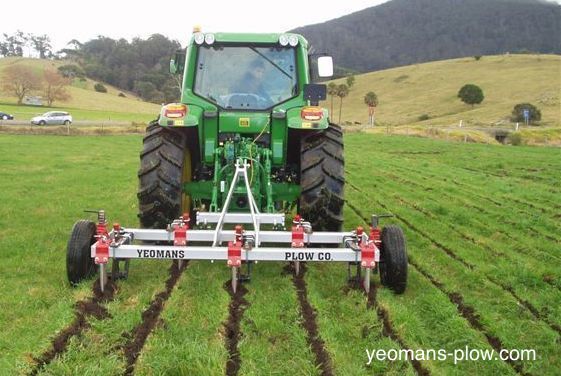
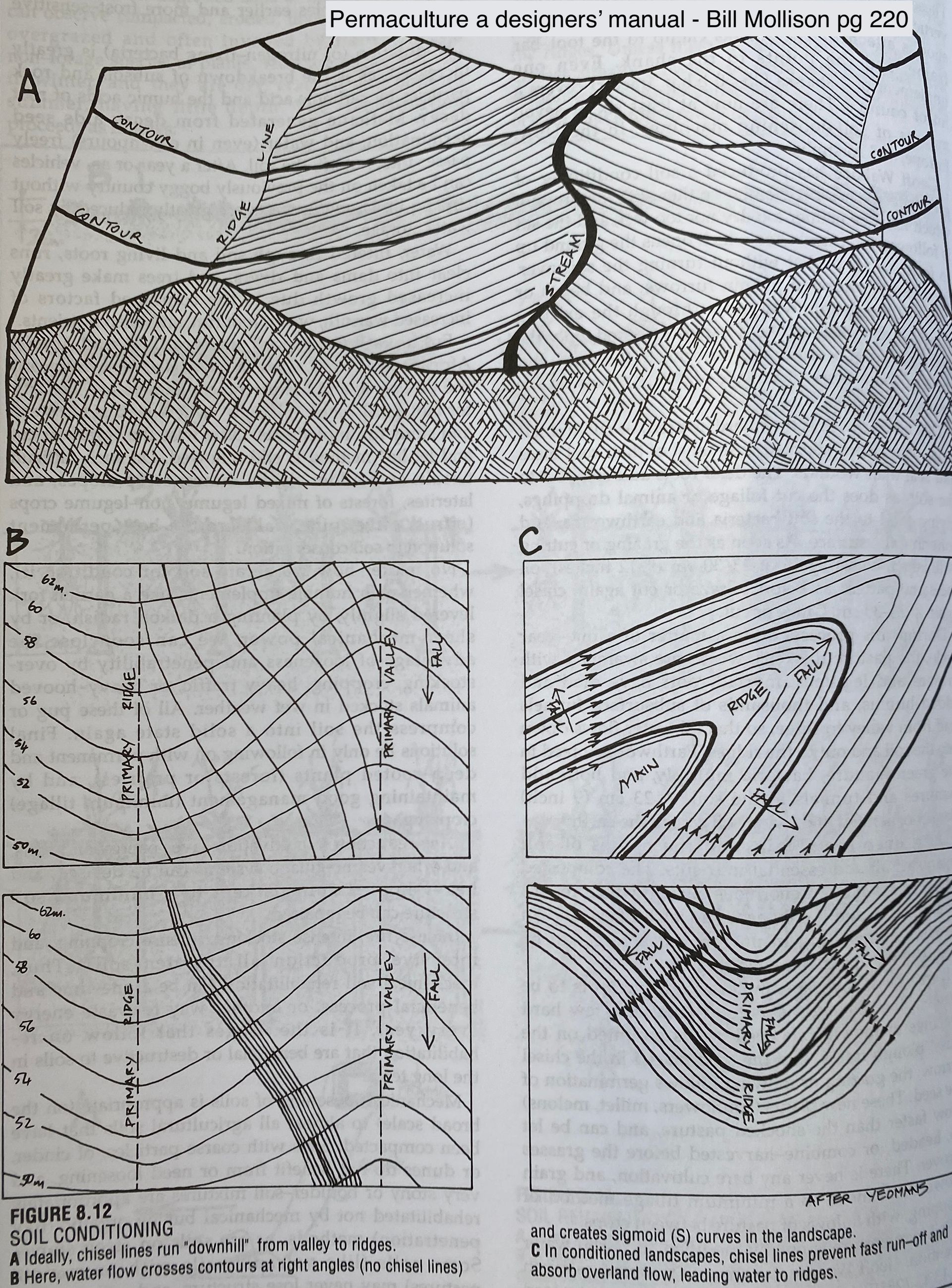
The technique can be applied to the cultivation of annual crops, for pastures, orchards and food forests, for the restoration of landscapes...
Keyline can therefore also be applied to restoration agriculture, regenerative agriculture and hydrology, concervation agriculture as well as in other forms of agriculture.
It is becoming crucial for building resilience against the effects of climate change and restoring soils depleted by industrial agriculture, intensive forestry, or overgrazing. It can also be used after desealing and maturing excavated subsoil, brought on top.
Keyline design can be applied to virtually any terrain and climate, but a customized design and strategy must always be developed, tailored to the soil, climate, and application. At Pereniah, we can help you with this.




